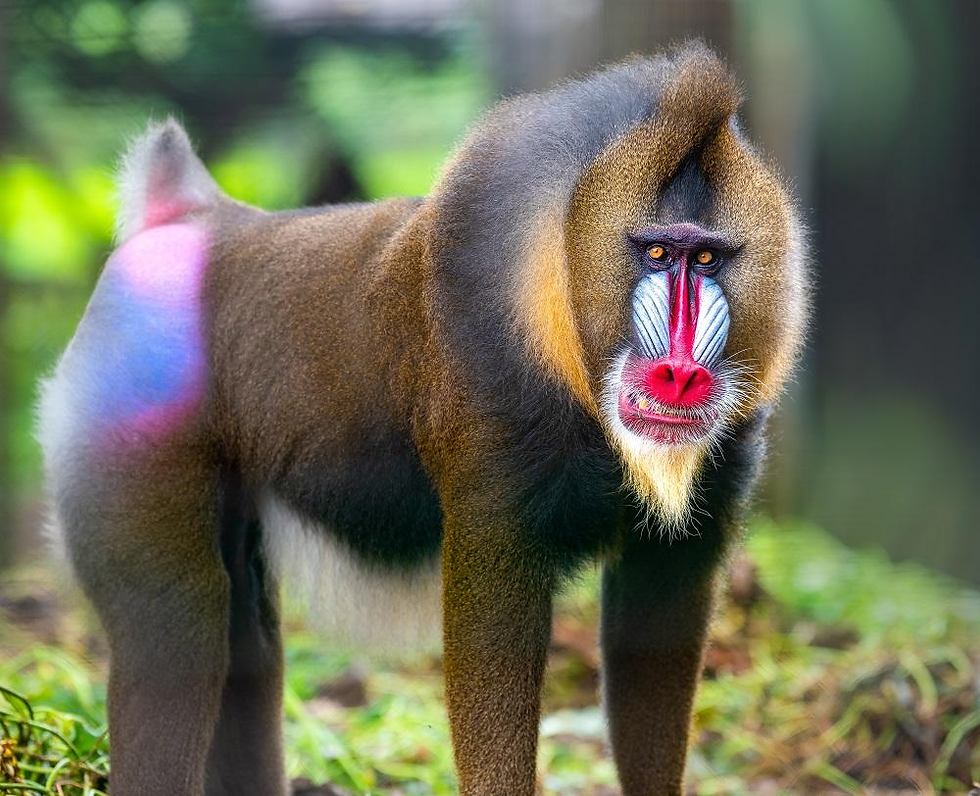Unique monkeys to look at!
- Ayushi Mishra
- Jul 19, 2023
- 2 min read
I recently completed reading a delightful, interesting and funny book on primates - "Different - Gender Through the Eyes of a Primatologist" by Frans de Waal. This book talks about our close relatives - chimpanzees and bonobos, and also about our not so close relatives - monkeys! I was surprised to learn how extremely intelligent, logical, romantic, kind, generous, courteous, loving, benevolent (and the list goes on) these animals can be. Chimpanzees (Pan troglodytes) and bonobos (Pan paniscus) are so close to us that many scientists have argued to merge our genus (Homo sapiens) with theirs' (Pan sapiens?).
Humans, chimps and bonobos descended from a single ancestor species that lived six or seven million years ago.

The book is mainly about the three chimpanzees, but it talks about monkeys as well.
Monkeys may seem annoying and violent, but they also share a lot of attributes with us. Apart from being an interesting mix of delight and terror, monkeys exhibit vibrancy in their features unlike us. Let us look at some of these beautiful and weird creatures.
Below is a male mandrill.

The male mandrill's flamboyantly colored face replicates what's on his behind. His bright red 'pee-pee' against blue buttocks is replicated on his face - a red line running down the middle of his face, flanked by blue paranasal ridges. His orange goatee (small pointy beard) matches the orange hair tufts that protrude from his behind.

Now this is a female gelada baboon.

The pattern of the female gelada baboon's derrière is repeated on her chest, where her two bright red nipples are situated so closely together that they resemble what is down there. They are surrounded by exposed skin that mimics her behind.
The way these two areas are synonymous is astonishing. It gives a "preview" (if you may say) to the opposite sex. Do you think this replication pattern also exist in humans? Think about it!
Behind the odd mix of colors and morphological features is the play of sexual selection. Unlike natural selection, which "favors traits that assist survival, such as camouflage colors and escape tactics", sexual selection "favors traits that do nothing for survival but appeal to potential mates". In the course of evolution, our ancestors began to place less emphasis on behinds in favor of faces.
Obviously the synonymy is not present is all the monkeys. Some have managed to attract mates by just having colorful genitals. Sexual selection is what gave apes their striking genitalia.
Vervet monkey has bright blue testicles. It almost looks like an edit. It is for sure that they will attract your attention, let alone a female vervet's.

On a different topic than sexual selection, some monkeys have managed to adopt an anatomical shift. Spider monkeys, a neotropical ape have males' genitals looking like females', and vice versa.

The female of the species is well known for its elongated genitals. In this species, a monkey that has a “dangling genital thing” must be a female, even at a young age. The genitals of males are small and well-hidden. Scientists don’t know the reason for this anatomical reversal. At Chester Zoo, in the United Kingdom, human parents are seen explaining their children how well "father monkeys" take care of their babies.




Very interesting